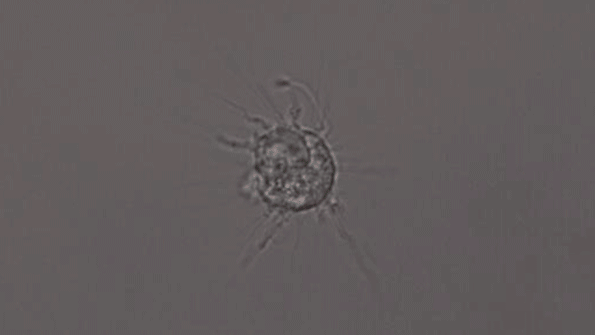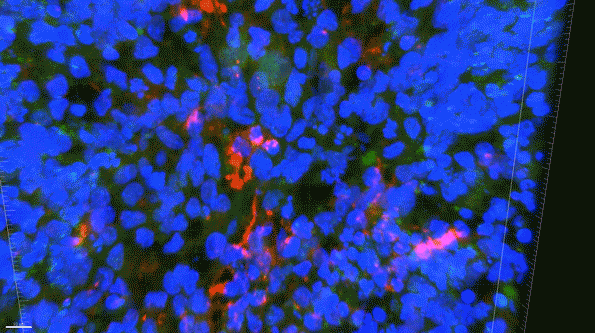
Following a recent study conducted by a group of MIT neuroscientists, it’s been noted that people with the APOE4 gene variant are more likely to develop late-onset Alzheimer’s disease than the general population. It’s also thought to be around three times as common in Alzheimer’s patients opposed to those free of the disease.
Until just recently, researchers knew very little as to why APOE4 posed a higher risk for contracting Alzheimer’s. After conducting a comprehensive study of both APOE4 and the more commonly found APOE3 gene, researchers found that the former promotes the buildup of the beta-amyloid proteins that cause issues in the brains of those with Alzheimer’s.

“APOE4 influences every cell type that we studied, to facilitate the development of Alzheimer’s pathology, especially amyloid accumulation,” explains Li-Huei Tsai, senior author of the study and director of MIT’s Picower Institute for Learning and Memory. What the researchers also discovered was that they could wipe out the signs of Alzheimer’s all together in brain cells with APOE4 by transforming it into APOE3 instead.
The full name for APOE is apolipoprotein E and it comes in a 2, 3, and 4 variant. This gene binds to lipids and cholesterols in order to help the cells absorb the lipids. Astrocytes are the cells responsible for producing lipids within the brain. These lipids are then secreted and absorbed by neurons with the help of APOE.
It’s estimated that around 8 percent of the general population has APOE2, 78 percent has APOE3, and 14 percent have APOE4. However, the statistics for those with late-onset Alzheimer’s are much different with only 4 percent having APOE2, 60 percent having APOE3 and a hugely increased APOE4 at 37 percent.
“APOE4 is by far the most significant risk gene for late-onset, sporadic Alzheimer’s disease,” says Tsai. “However, despite that, there really has not been a whole lot of research done on it. We still don’t have a very good idea of why APOE4 increases the disease risk.” Using human induced pluripotent stem cells, the team managed to stimulate those stem cells to separate into three kinds of brain cell: astrocytes, neurons, and microglia.
Then, using CRISPR/Cas9 the researchers converted APOE3 to APOE4 in stem cells. Because the cells are exactly the same apart from the APOE gene, the team were able to identify any difference between them that could be a result of the gene. In neurons, they found that cells expressing APOE3 and APOE4 differed quite substantially with around 250 that went down and 190 that went up in those cells with APOE4. The levels of astrocytes were higher than that. But, the highest change of them all was found in the APOE4 microglia with more than 1,100 genes showing reduced activity and around 300 showing more.
As well as genetic changes, the researchers also saw changes in the cell’s behavior. They found APOE4 neurons formed more synapses while secreting higher levels of amyloid protein and they discovered that APOE4 astrocytes have dysregulated cholesterol metabolism. Microglia were also affected in a similar way becoming much slower at removing foreign matter when they had the APOE4.
The researchers developed 3D miniature brain models from cells known to cause early-onset Alzheimer’s in another experiment. These organoids were high in terms of amyloid aggregate levels but almost completely cleared away when exposed to APOE3 microglia. APOE4 microglia, on the other hand, had no clearing effect at all.

In conclusion, Tsai believes that APOE4 may be responsible for disrupting specific signaling pathways, which in turn, leads to the changes in the cell’s behavior demonstrated during the study. “From this gene expression profiling, we can narrow down to certain signaling pathways that are dysregulated by APOE4,” says Tsai. “I think that this definitely can reveal potential targets for therapeutic intervention.”
The findings of this study certainly do suggest that gene-editing is an effective way of treating Alzheimer’s patients who have the APOE4 gene. “If you can convert the gene from E4 to E3, a lot of the Alzheimer’s associated characteristics can be diminished,” says Tsai.
More News to Read
- Scientists Discover Nearly 80 Exoplanet Candidates in NASA’s K2 Mission
- A Breakthrough in Gene Editing Sees Researchers Cure Blood Disorder
- New Frequency Hopping Transmitter Defies Even the Fastest Hackers
- Are New Mars Rocks Shielding Secrets about Alien Life 4 Billion Years Ago?
- Researchers Gain Deeper Understanding into Quantum Technology Thanks to Superconducting Vortex
